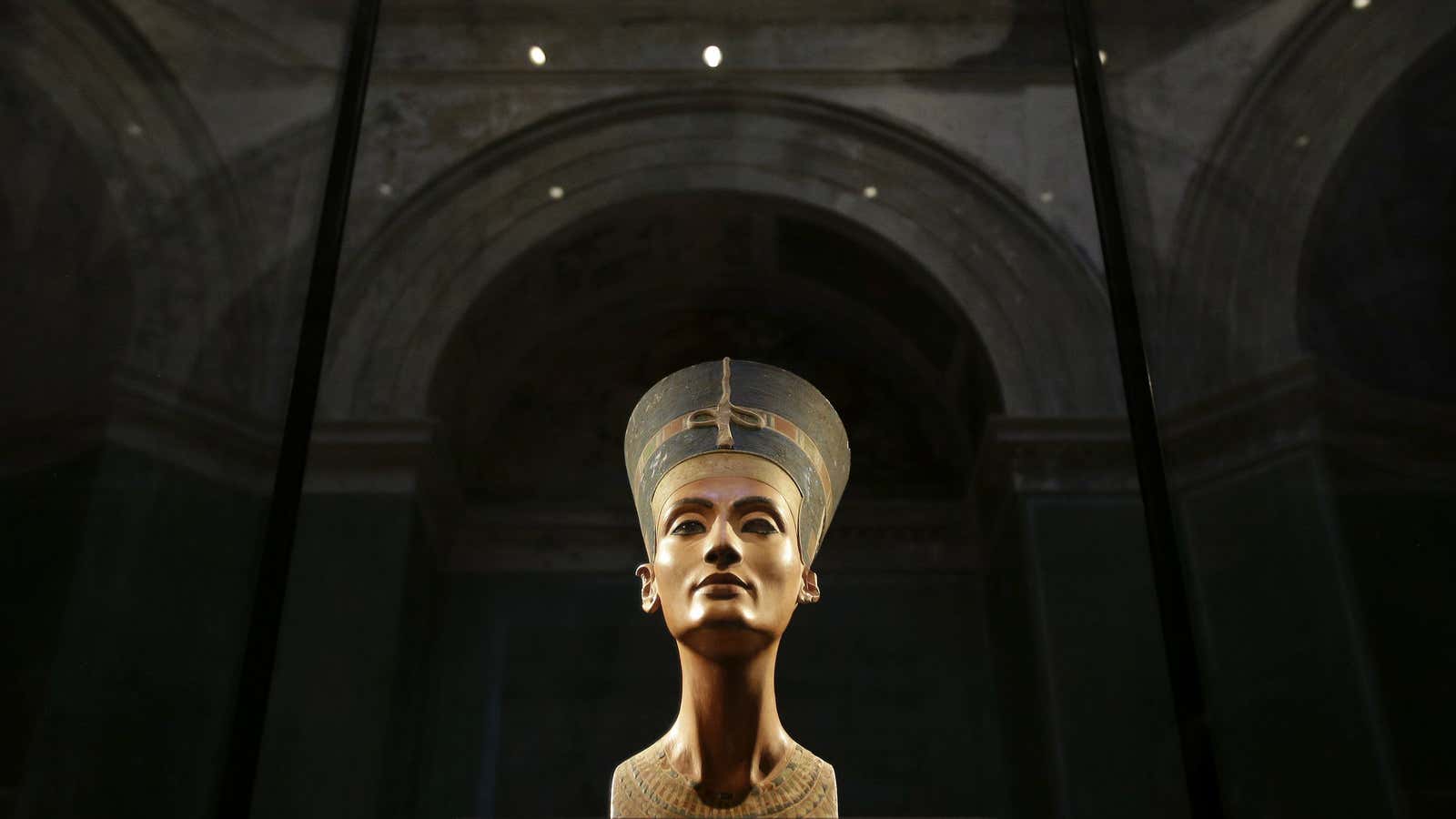A huge sculpture of Queen Nefertiti was removed last week from the city of Samalut, Egypt, after critical outrage spread through social media.
The sculpture Nefertiti, whose name translates to “a beautiful woman has arrived,” had been intended as a replica of the fine original limestone bust created by royal Egyptian sculptor Thutmose in 1345 BC.
Mocked, memed, parodied and lampooned on Twitter with the hashtag #Nefertiti, the effigy’s likeness has been compared to that of Frankstein, and of president Abdel-Fattah el-Sissi.
“Can you spot the difference?”
But Egypt’s rancor around the sculpture was captured best by one tweet: “This is an insult to Nefertiti and to every Egyptian.”
On July 6, the Cairo Post reported that city officials had bowed to public opinion. Provincial governor Salah el-Din Ziyada was quoted admitting that the cartoonish sculpture failed to re-create the original’s “precise Egyptian facial features.”
Discovered nearby, during a controversial 1912 dig by German archeologist Ludwig Borchardt, the original can be found today in the Neues Museum in Berlin, Germany. Ownership of that Nefertiti statue is hotly contested, and constitutes one of the world’s highest-profile examples of plundered antiquities.




